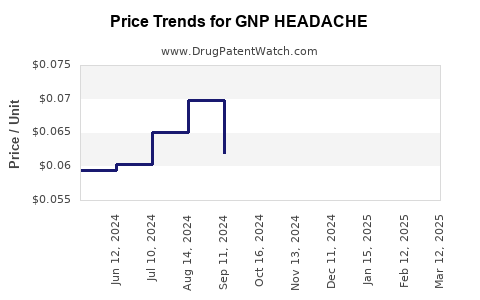Drug Price Trends for GNP HEADACHE
✉ Email this page to a colleague

Average Pharmacy Cost for GNP HEADACHE
| Drug Name | NDC | Price/Unit ($) | Unit | Date |
|---|---|---|---|---|
| GNP HEADACHE RELIEF CAPLET | 46122-0690-78 | 0.06295 | EACH | 2024-11-20 |
| GNP HEADACHE RELIEF CAPLET | 46122-0690-78 | 0.06531 | EACH | 2024-10-23 |
| GNP HEADACHE RELIEF CAPLET | 46122-0690-78 | 0.06200 | EACH | 2024-09-18 |
| >Drug Name | >NDC | >Price/Unit ($) | >Unit | >Date |


